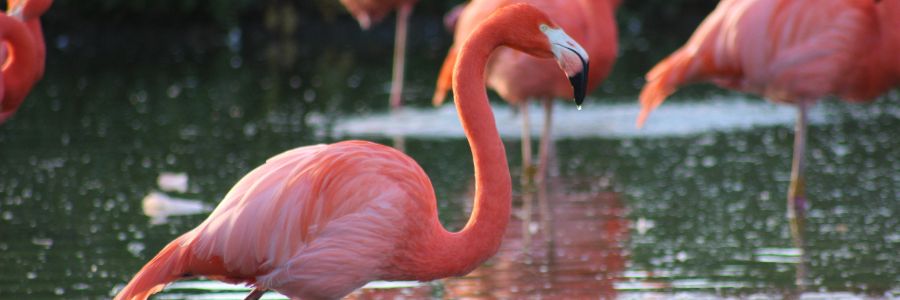Why do flamingos stand on one leg: The reason why flamingos stand on one leg is not entirely clear, and there are several theories to explain this behavior. One theory suggests that standing on one leg allows flamingos to conserve body heat. Flamingos are found in a range of habitats, from hot, tropical regions to cooler, high-altitude areas, and standing on one leg may help regulate their body temperature by minimizing heat loss through their legs. Another theory suggests that standing on one leg may allow flamingos to rest one leg at a time while keeping the other leg warm in the water. This may be important for flamingos, as they spend a lot of time wading in shallow water, which can be cold.
Another theory is that standing on one leg helps flamingos conserve energy. Flamingos are able to balance on one leg without any muscular effort, and by doing so, they may reduce the amount of energy they need to expend to remain upright. This could be important for flamingos, as they are long-lived birds that require a lot of energy to maintain their large bodies and to engage in activities such as breeding and migration.
Overall, the exact reason why flamingos stand on one leg is still a subject of research and debate among scientists, and it is likely that multiple factors contribute to this behavior.
How Do Flamingos Stand On One Leg
Flamingos are able to stand on one leg without any apparent muscular effort, thanks to their unique skeletal structure and nervous system adaptations. The knee joint of a flamingo’s leg is located close to its body, rather than near the middle of the leg like in most birds. This allows the flamingo to balance its body weight directly over its one leg, reducing the amount of effort required to stand upright.
Additionally, flamingos have a specialized tendon in their legs that enables them to lock their knee joint in place when standing. This means that the flamingo can maintain a stable, upright position on one leg without using any muscular effort. The exact mechanism by which this tendon works is still not fully understood, but it is thought to involve a combination of passive mechanical support and neural feedback.
Overall, flamingos are able to stand on one leg for extended periods of time without getting tired or losing their balance, thanks to a combination of skeletal and nervous system adaptations that allow them to conserve energy and maintain stability.
How Long Can a Flamingo Stand On One Leg
Flamingos are able to stand on one leg for extended periods of time, ranging from a few minutes to several hours. The exact length of time that a flamingo can stand on one leg depends on a variety of factors, including the bird’s age, physical condition, and environment.
One study conducted on captive flamingos found that they were able to stand on one leg for an average of around 6 hours per day, with some individuals able to stand for up to 12 hours at a time. However, it is important to note that these birds were in a controlled environment, and wild flamingos may need to stand on one leg for longer periods of time in order to conserve energy and maintain body heat.
Overall, flamingos are highly adapted to standing on one leg, and they are able to do so for extended periods of time without getting tired or losing their balance. This behavior is thought to serve a variety of functions, including conserving energy, regulating body temperature, and allowing the birds to rest while keeping one leg warm in the water.
